In late September 2023 we visited the region of the Langhe, southeast of Turin, famous for its wine, truffles and other produce, but also in large part for its beauty. We had planned this trip for a few years, but various obstacles – including COVID – got in the way. I took a large number of photographs, from which I have selected a few taken in and around the towns of La Morra and Barolo.
It was a trip of several hours by car from Umbria, made longer by heavy traffic around Genoa, as often happens. After crossing the mountains behind Genoa we found ourselves in the flat lands of the upper Po Valley – nothing like the hilly country we had been expecting, but in due course the hills of Langhe popped up quite abruptly near Asti, and it started to look a lot more like the brochures.
Piedmont
We were in the Region of Piedmont (Italian Piemonte) – meaning literally “at the foot of the mountains”. Before Italian unification it was part of the “Kingdom of Sardinia” – but despite the name the seat of the ruling House of Savoy was not in Sardinia but in Turin. The history of Savoy is a long one, and originally not particularly Italian. It was a county, and then a duchy, centred in what is now southeastern France, and the general culture of the court, including the language, was more French than Italian. You can still see the influence in the place-names, especially in the mountains on the French border, but the French language does not have special status as it does in the officially-bilingual Valle d’Aosta next door, and with the decline of regional dialects most Piemontese these days speak standard Italian.
The map below shows the area south of Turin, with the Langhe rather approximately indicated.
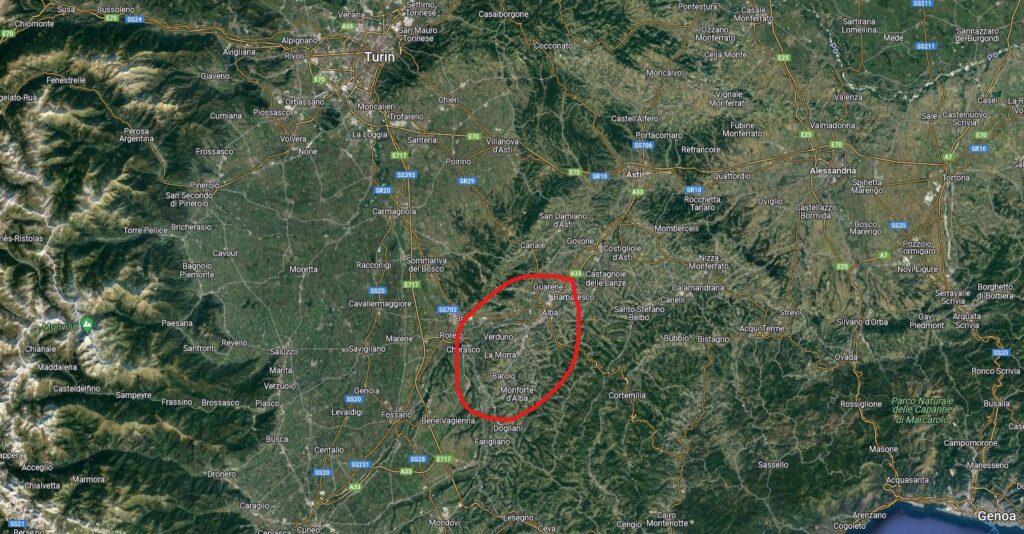
As we approached our destination the slopes began to be covered in vines – harvest was just starting and the black grapes were hanging heavily. Since we were staying near the town of Barolo, I assumed that most of these grapes were the Nebbiolo variety, which goes into the famous – and expensive – Barolo wine, and a bit further north, its softer cousin Barbaresco.
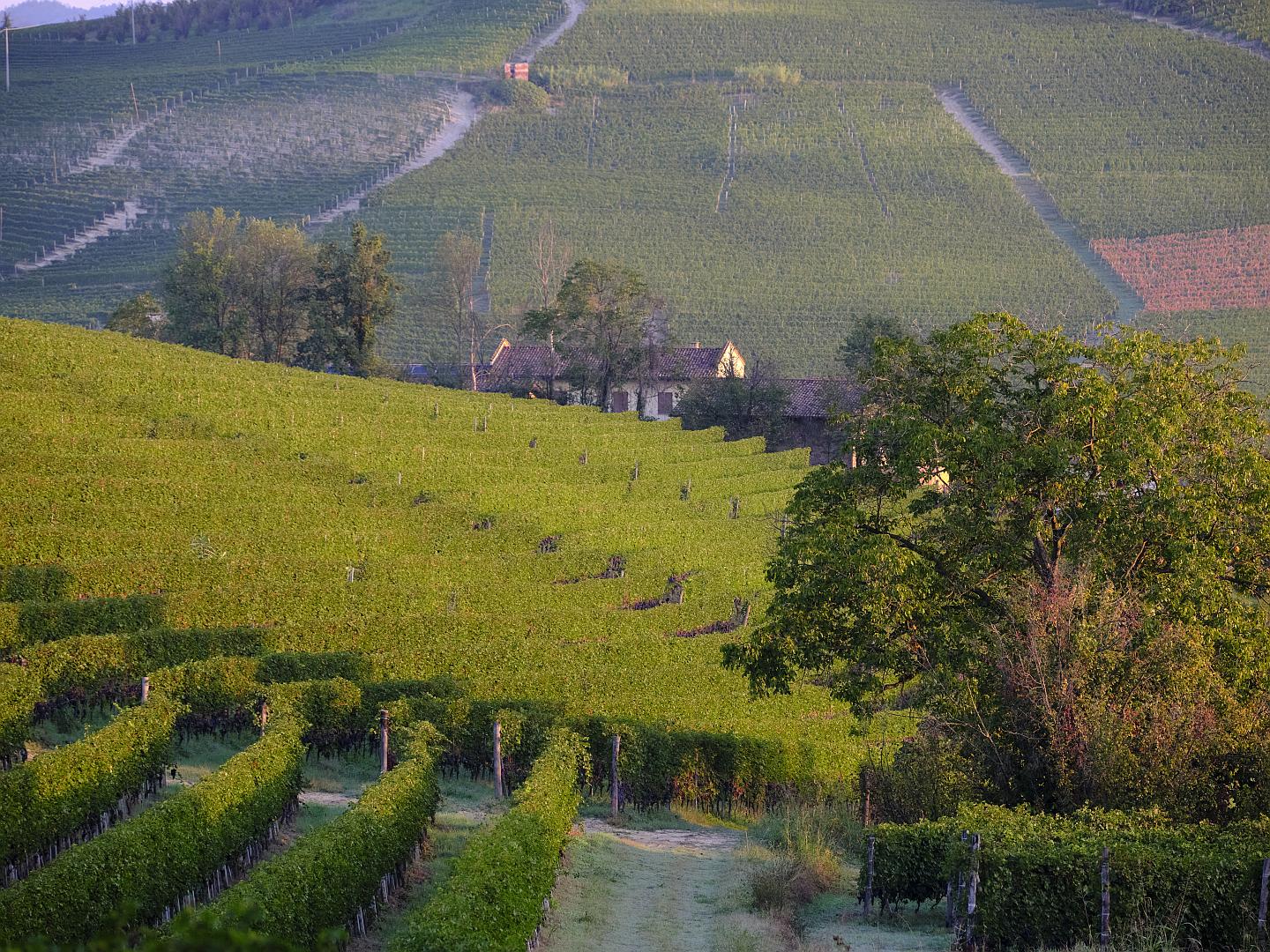
It is strange that such a dark-coloured grape produces a comparatively light-coloured red wine, but there is a lot of acid and tannin and the flavour is intense. Because of its colour I’ve seen Barolo compared to Pinot Noir, but it doesn’t taste or smell anything like Pinot to me. A related variety called Freisa produces similar but simpler wines which are a bit cheaper.
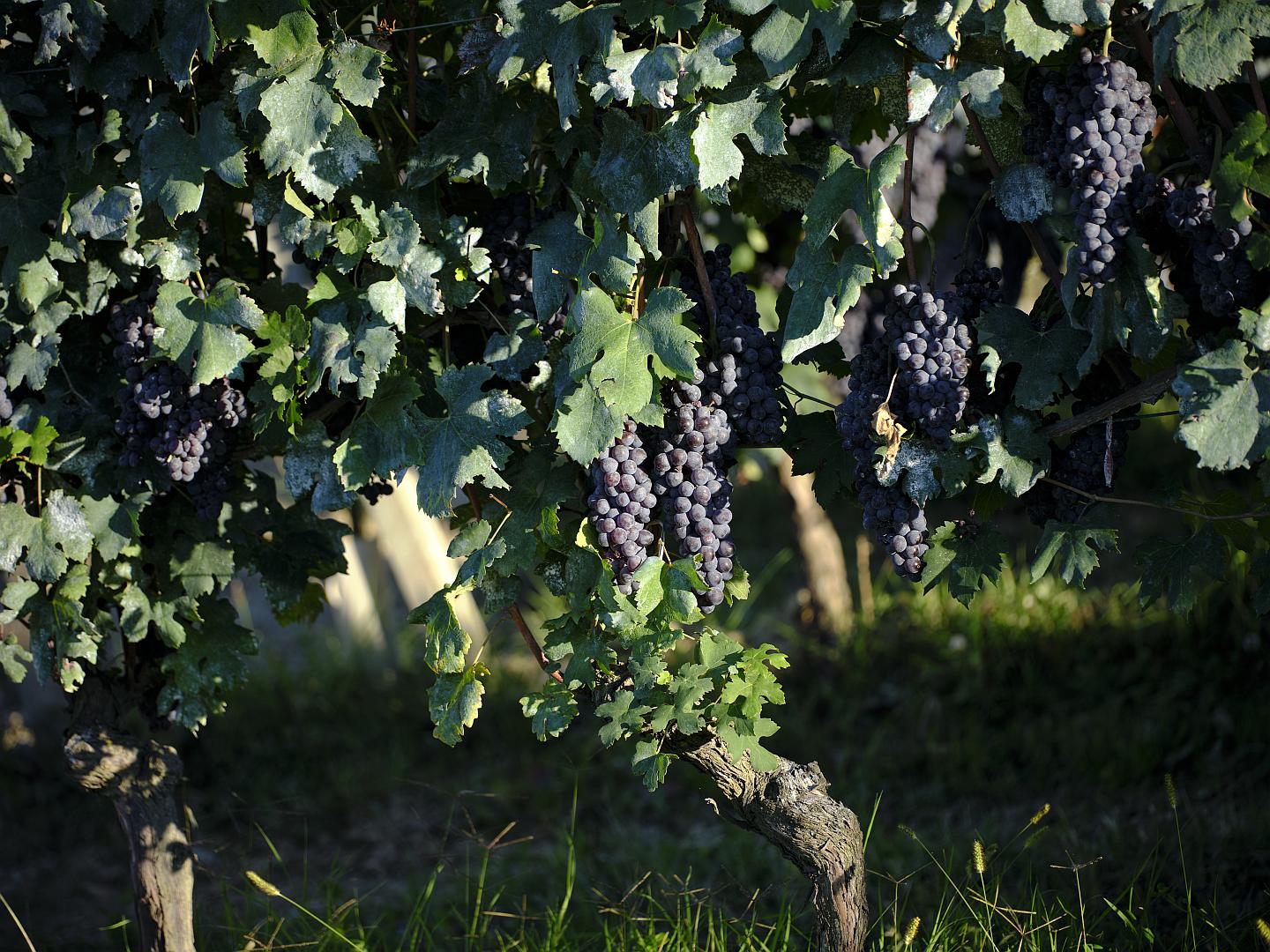
There were also plantations of lots of rather scrubby-looking trees. These turned out to be hazelnut trees. It seems that many of the hazelnuts for Nutella, as well as for the fancier gianduia, come from around here. There isn’t much you can do to make these trees very photogenic, except to take them at first light on a misty Autumn morning, which would make almost anything look good.
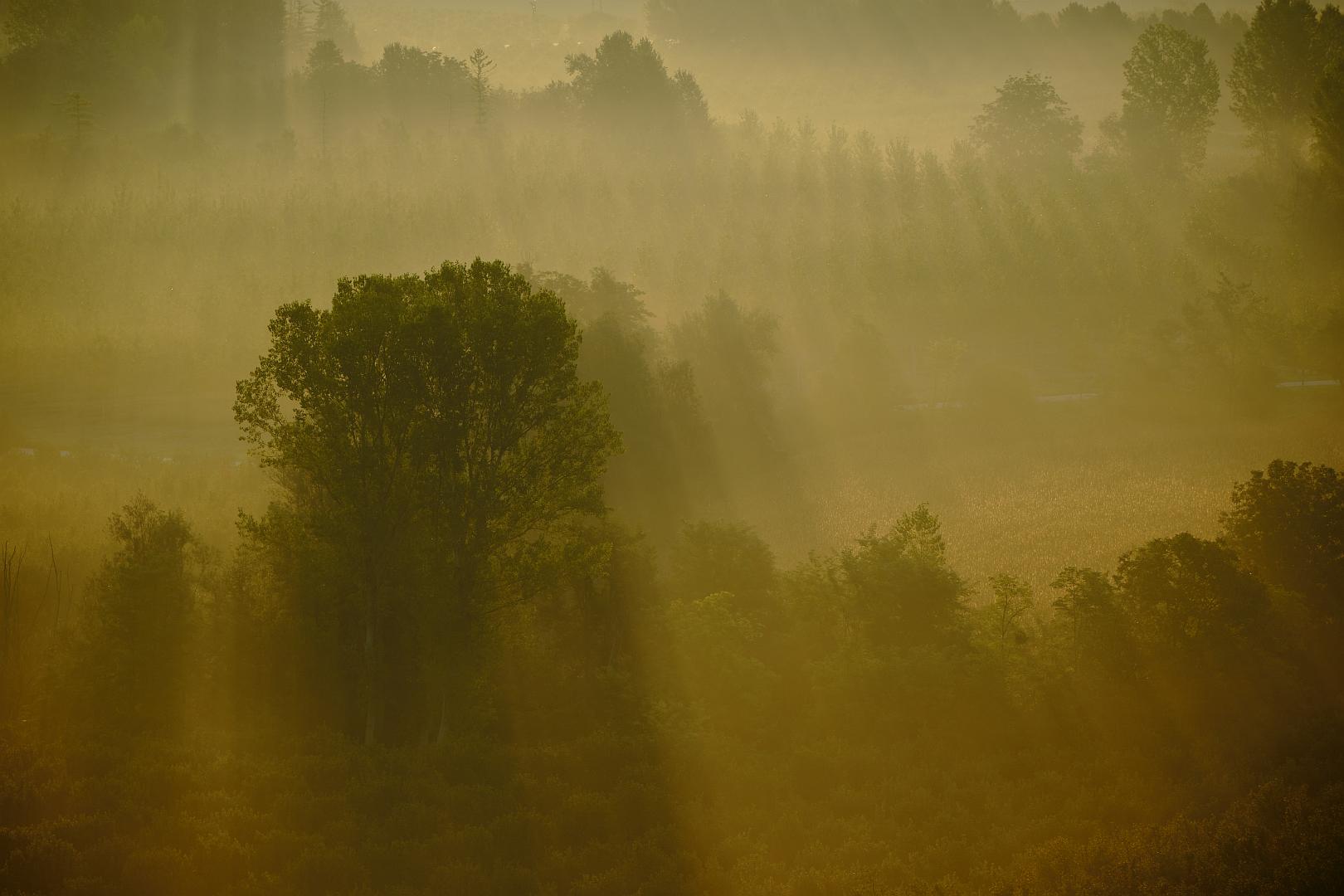
Looking about, one sees a landscape of rolling hills covered in vines and plantations of hazelnut trees. On the hilltops are little towns, and a few castles, showing that being part of a unitary Savoyard state didn’t mean everything was necessarily peaceful. But some of the towns are in the valleys, which suggests that defensive situations were not as critically important as they were further south. And of course this far north there would not have been the risk of malaria that drove people to higher ground in central and southern parts of Italy.
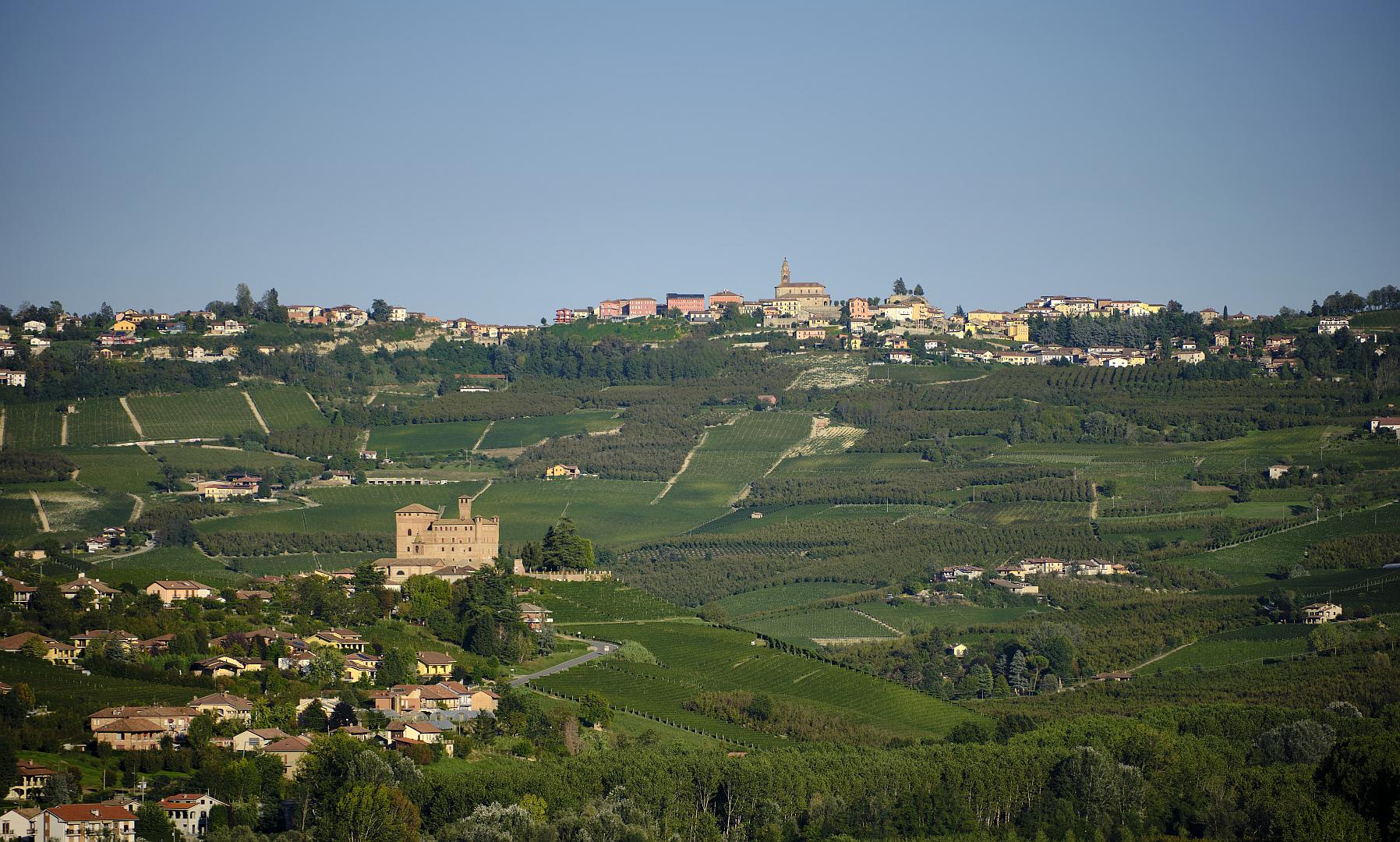
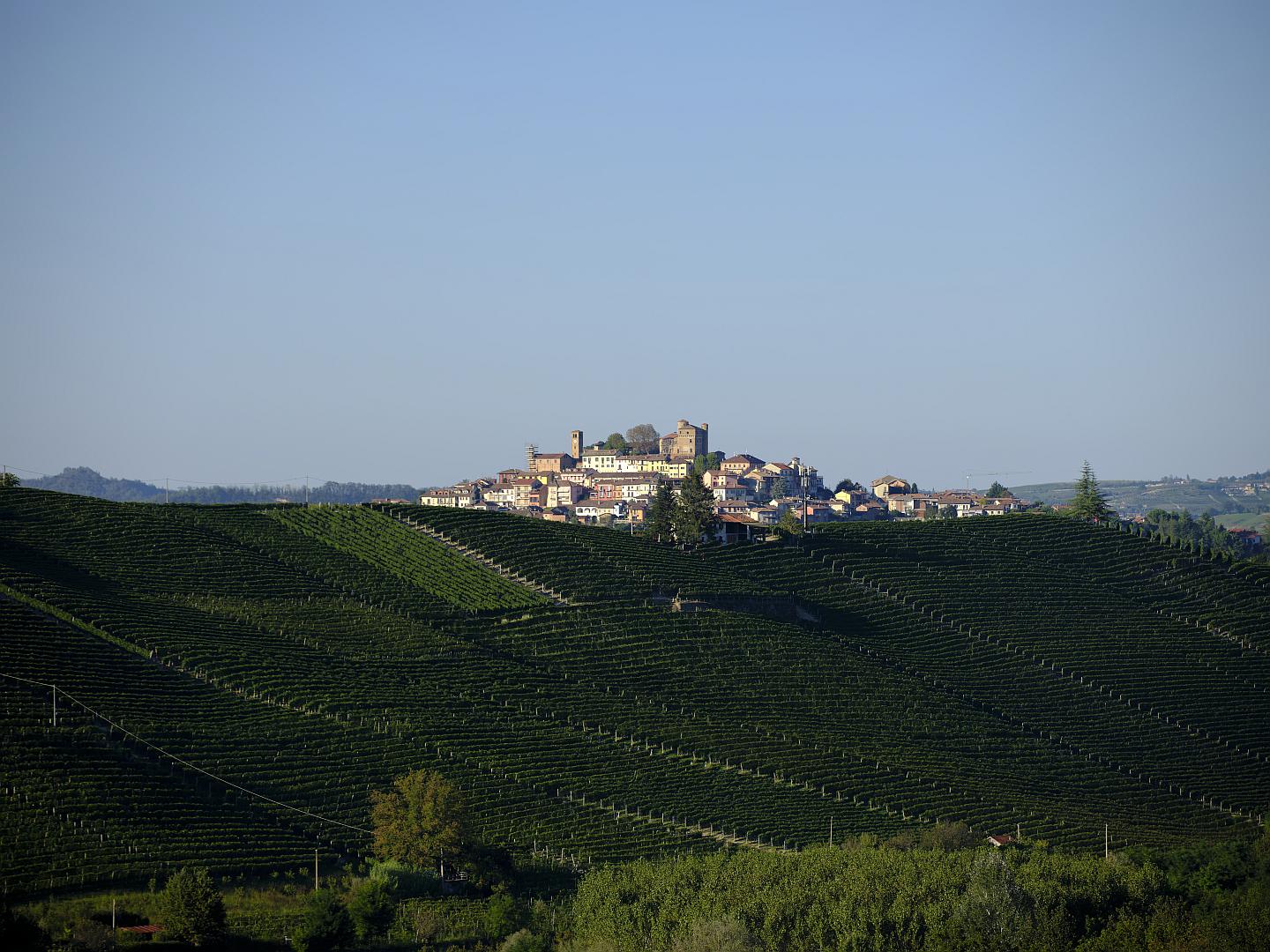
Away to the west on the horizon is the line of the Alps, where they curve down from the north and mark the modern boundary between France and Italy (in France the mountains are called the Alpes-Maritimes). It would be very beautiful here in spring, when the vines were starting to leaf and the snow was still on the mountains.
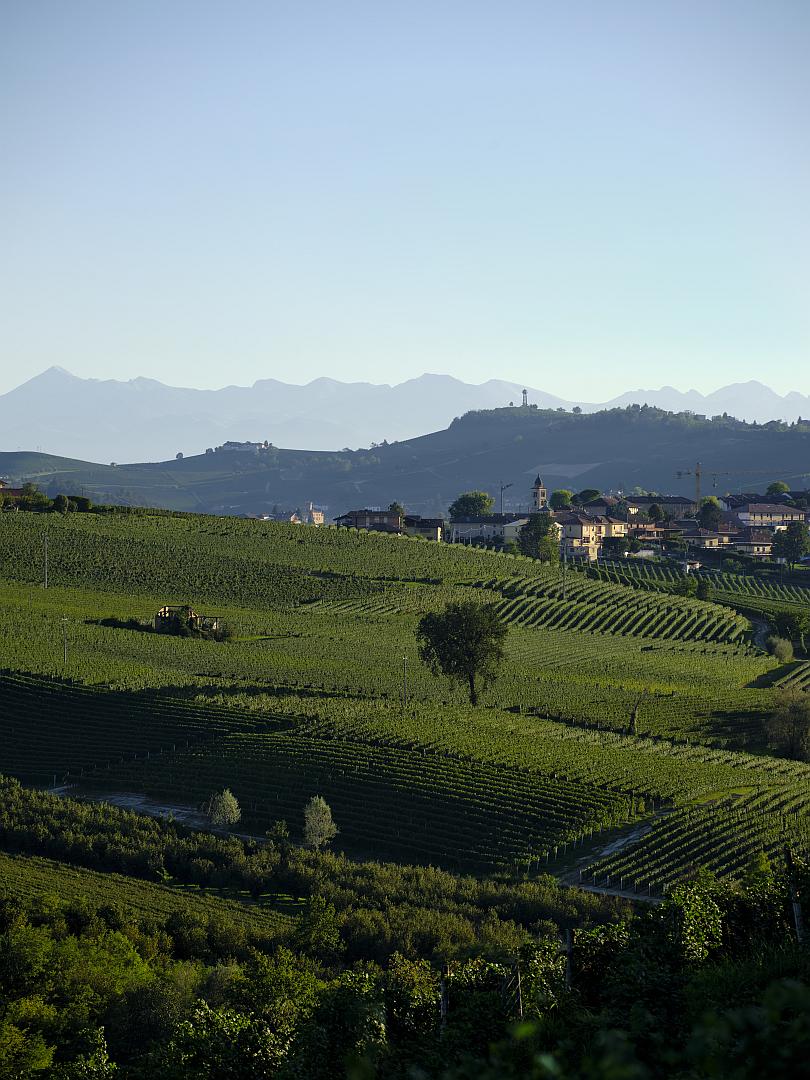
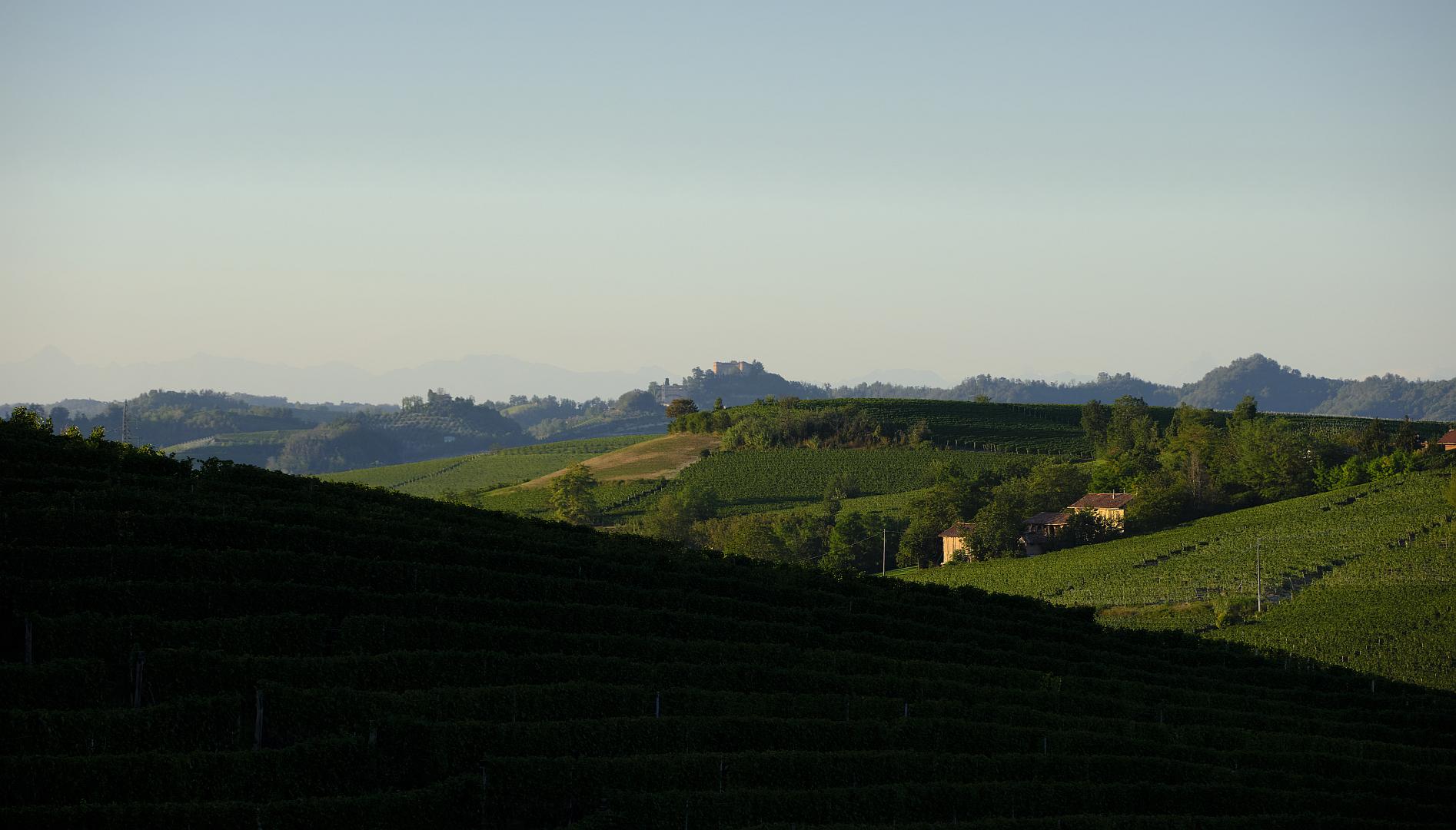
These days the area makes much of its reputation for wine and gastronomy and it no doubt attracts a lot of day trippers from Turin, which must generate a fair bit of income on top of that from primary production. Most of the promotional material tends to speak of the antiquity of the food and wine traditions of the Langhe, but while that may be so, I have read that the area was quite impoverished up to the 1960s.
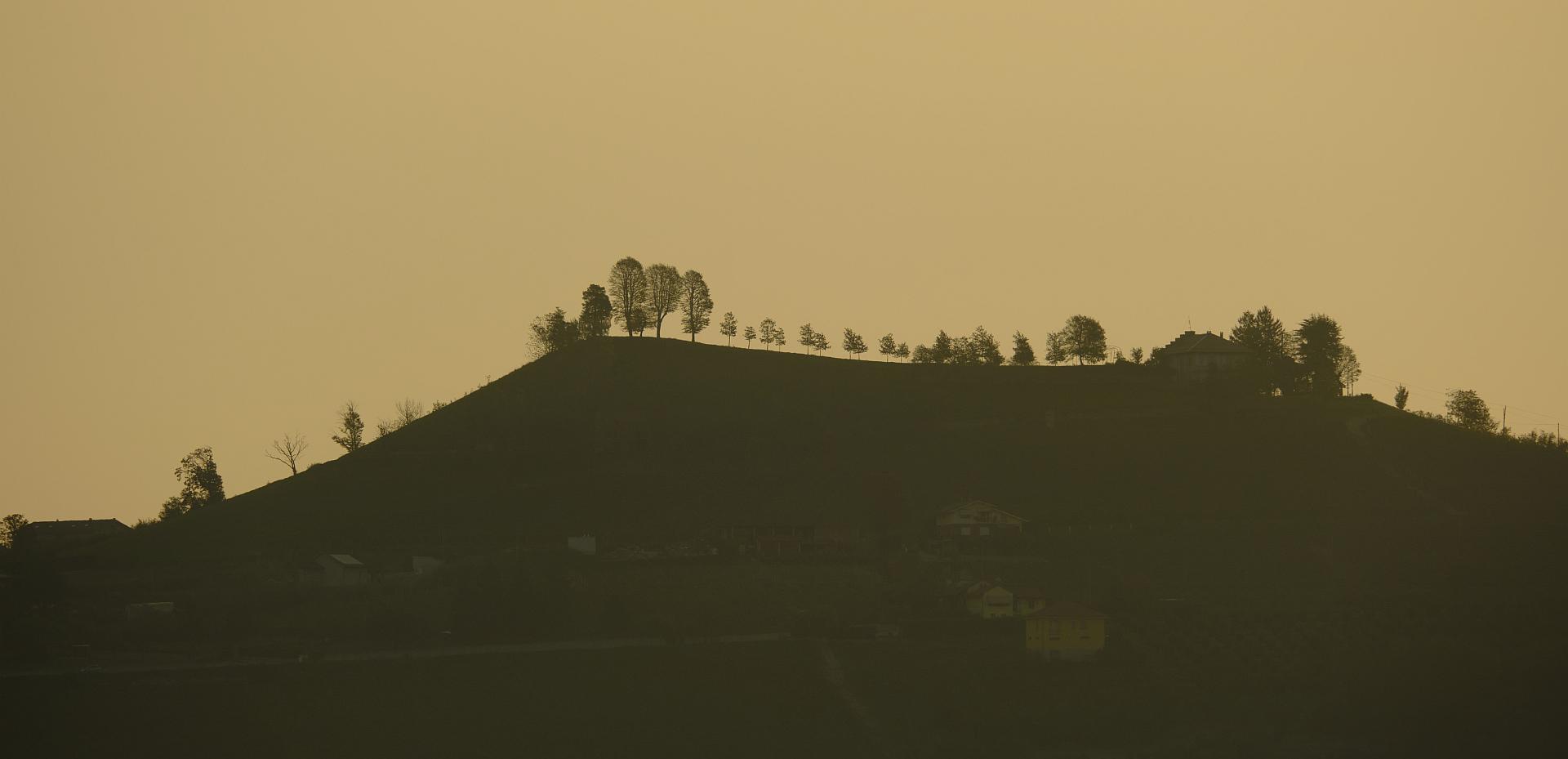
La Morra
La Morra is quite a small town, on a hilltop and with wonderful views.
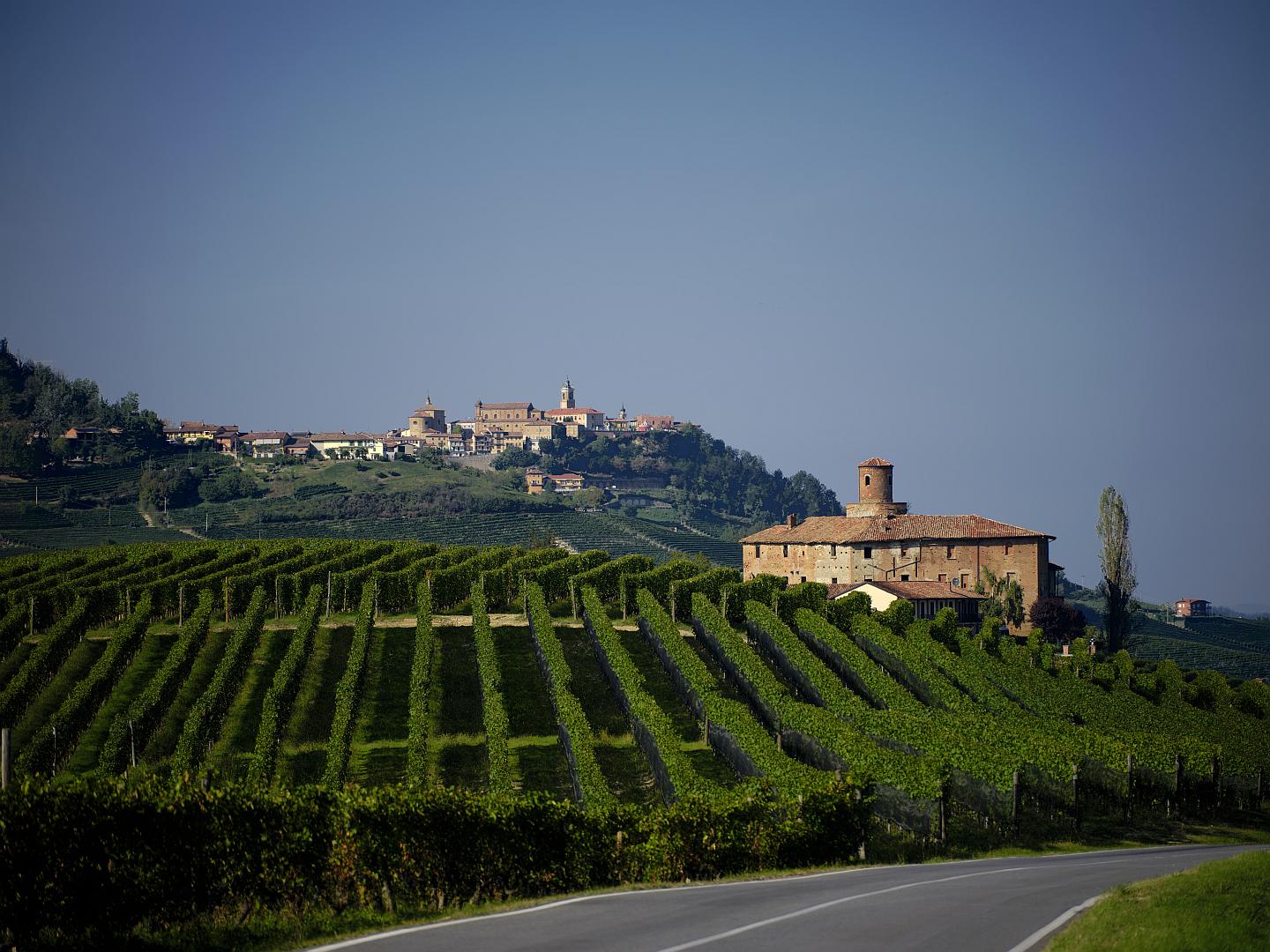
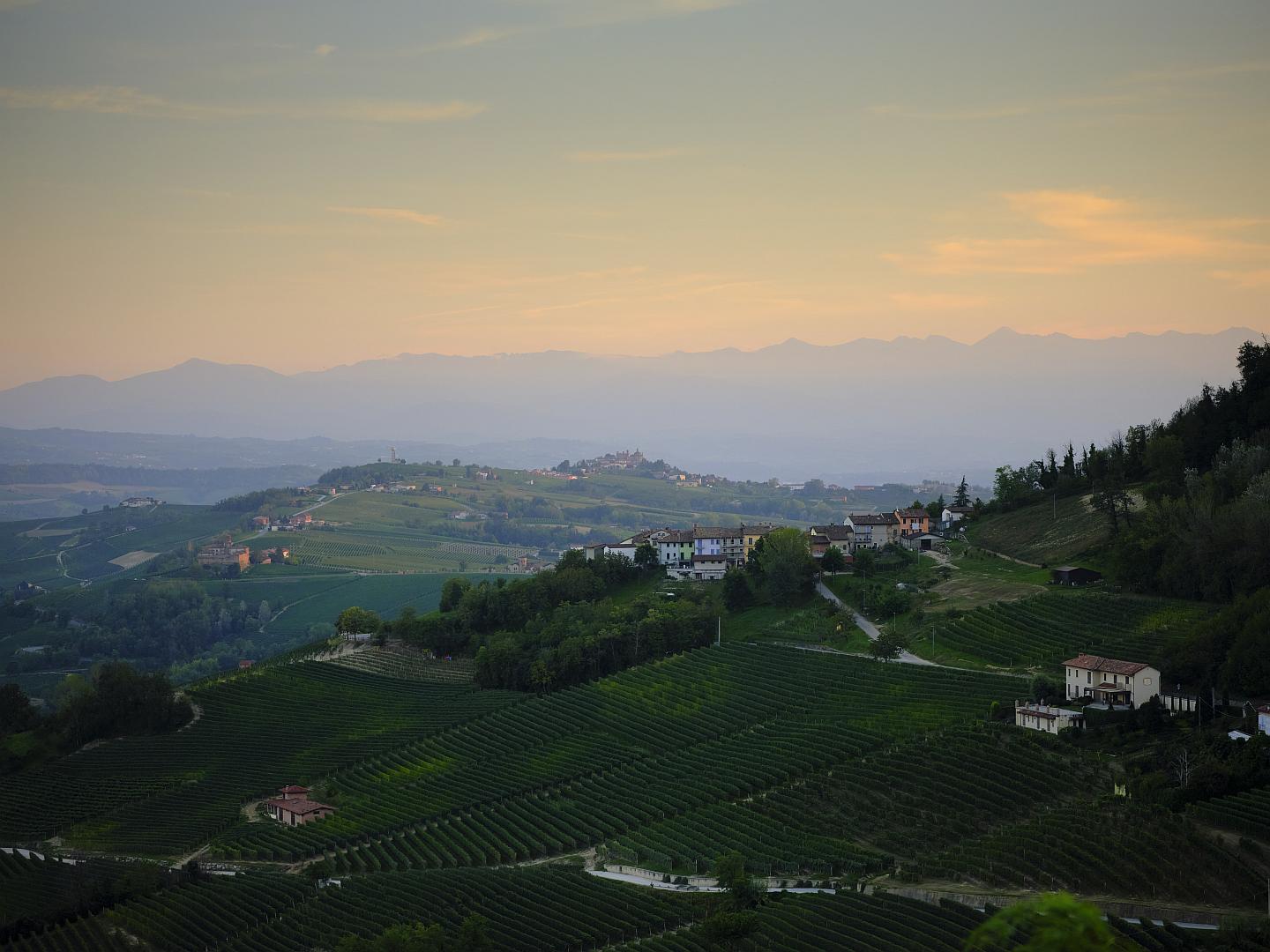
Not surprisingly, most of the shops in the historic centre are restaurants or sell wine and food. But La Morra hasn’t lost its living soul – right on the top of the hill is a school from which children spill noisily between classes, and the locals stop and chat in the streets.

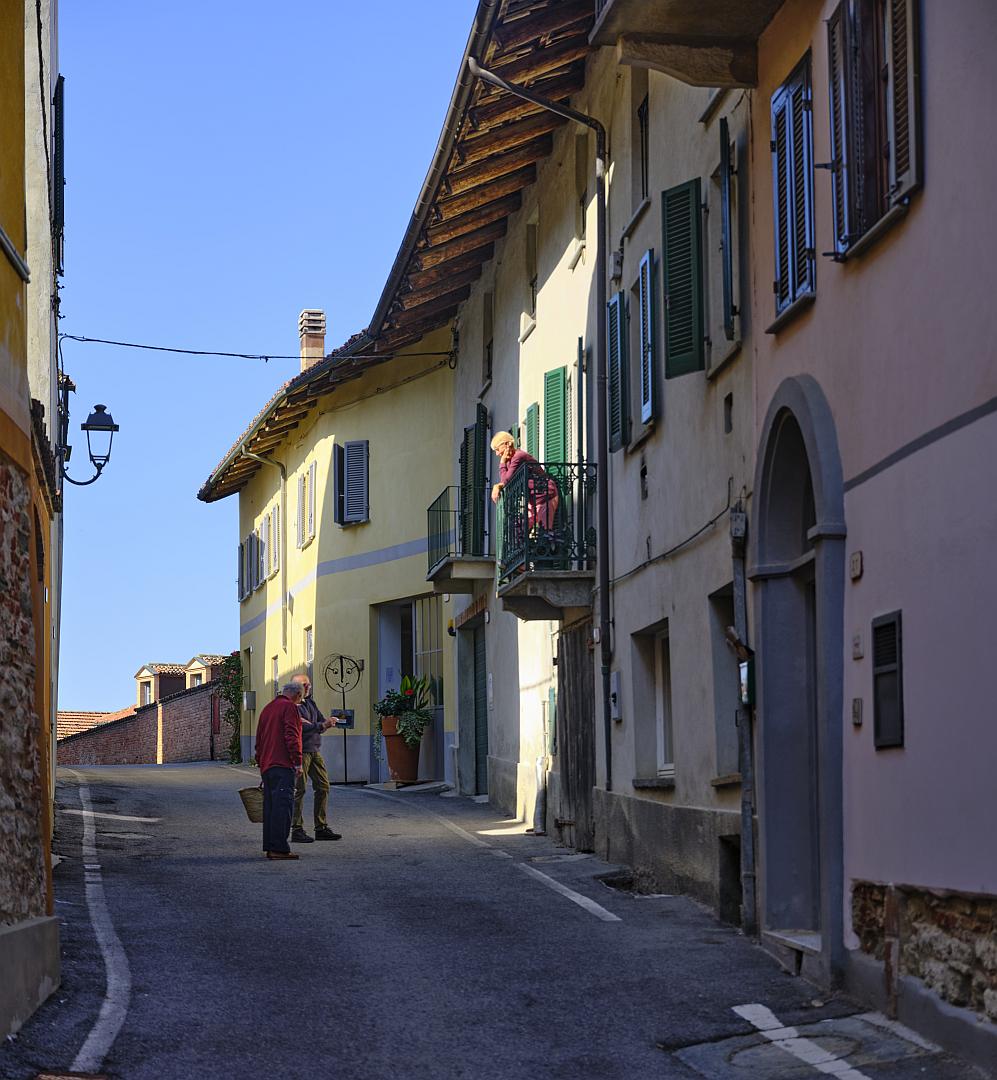
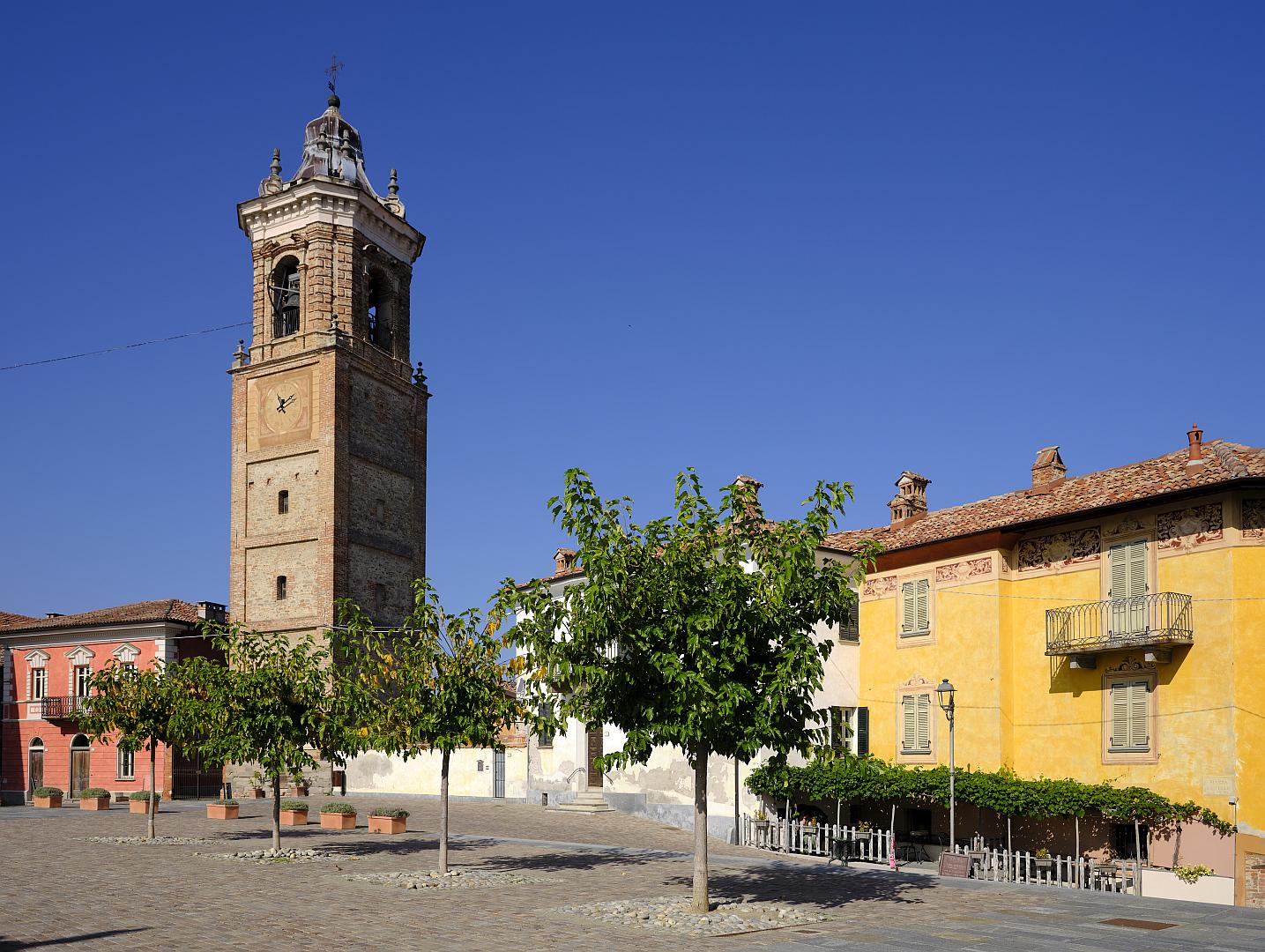
While in the restaurant in the photograph above, I decided that, despite the expense, it would be a missed opportunity to be in the Langhe during white truffle season, and not try some. The white truffle is rarer, more delicately-flavoured, and more expensive than the black truffle, and around here, especially near the town of Alba, they are famous. So I ordered a soft-boiled egg with fresh white truffle. There was a bit of theatre associated with it – I was presented with a glass bowl containing several truffles which looked a bit like things that might have been surgically removed from someone. I chose the smallest, which they weighed on a miniature set of scales which had a readout in grams to two decimal places. That was then put in a smaller bowl and left on my table, presumably to avoid substitution.
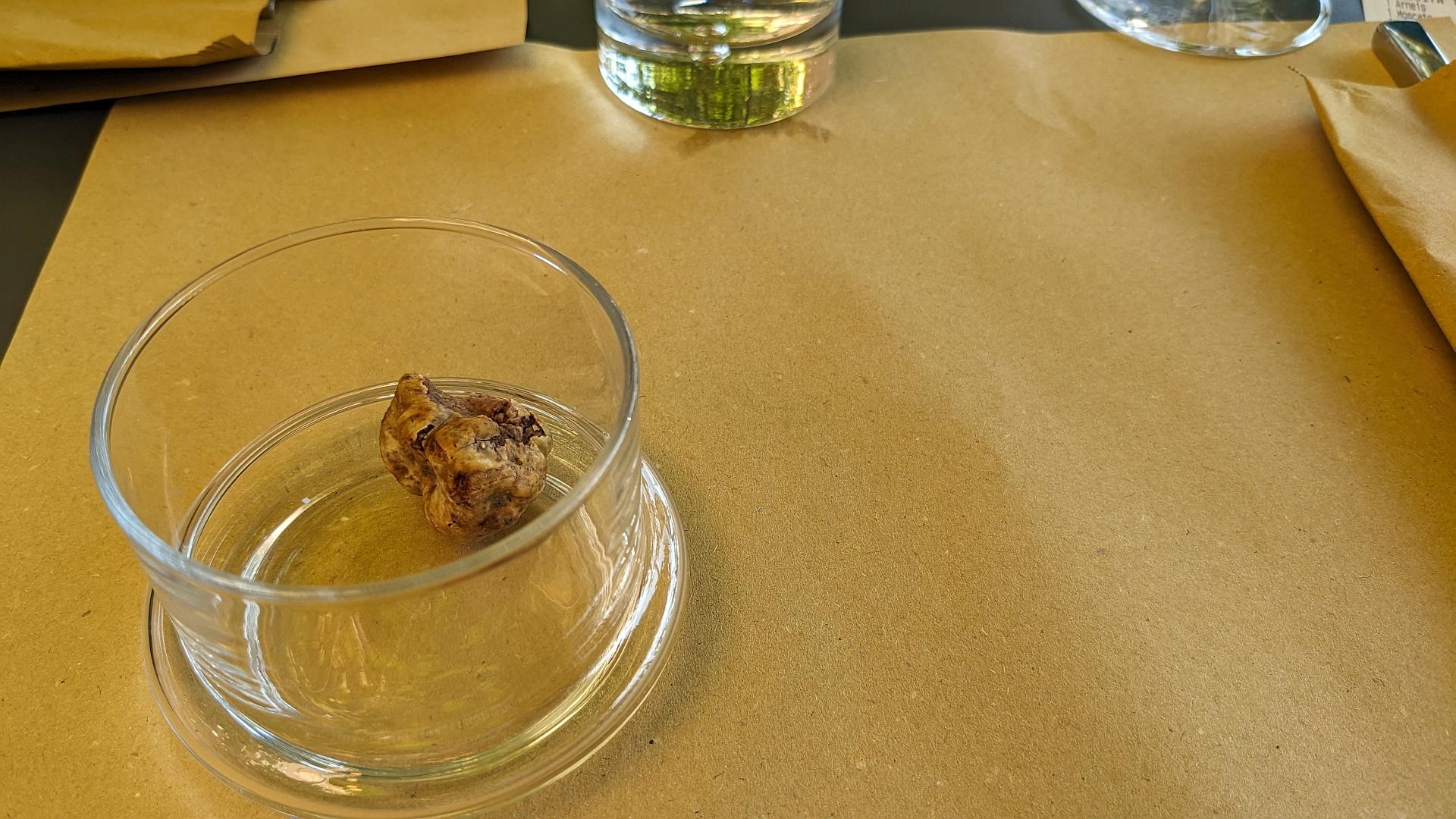
When the egg arrived, the waiter produced a special shaver and shaved the truffle over it with some ceremony. I wouldn’t say that it was the most memorable gustatory experience of my life, but it was certainly very nice, and I can at least say that I have had it.
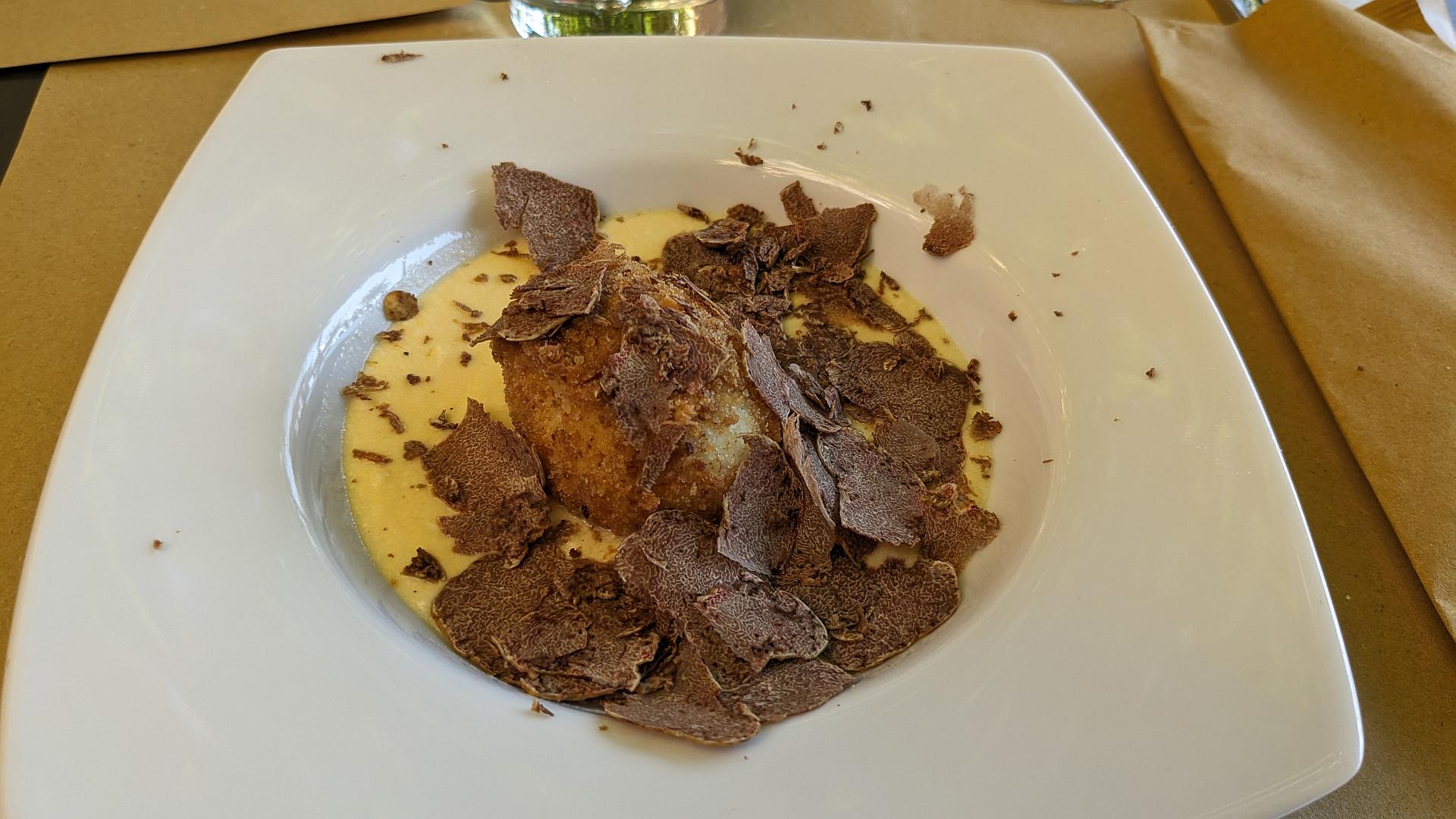
Barolo
Near to La Morra is the town of Barolo, no larger but more famous because it gave its name to the wine variety.
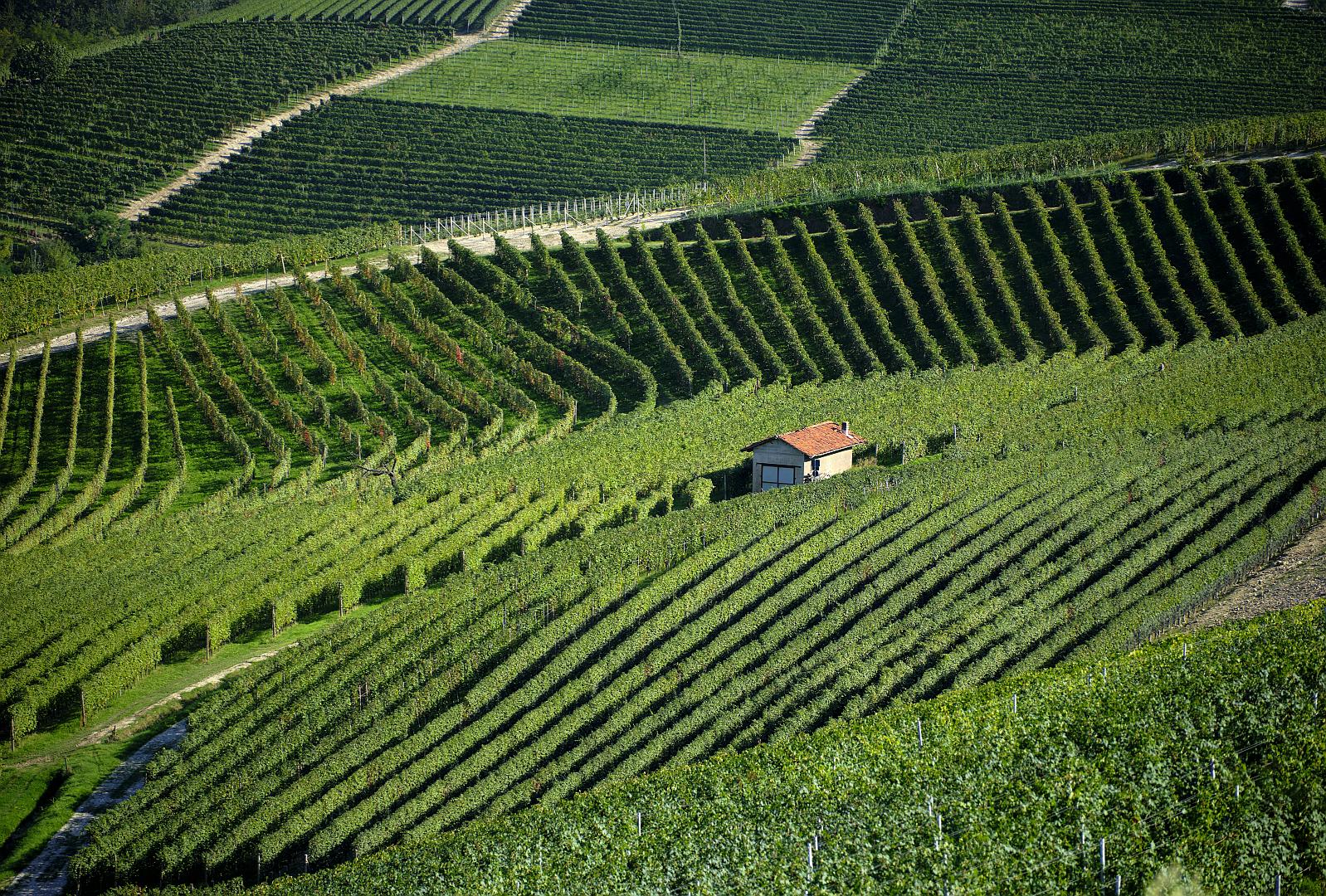
While La Morra is on a hilltop, Barolo is lower down the side of the valley, but still on a bit of a defensible outcrop on which a castle has stood since the 10th Century.
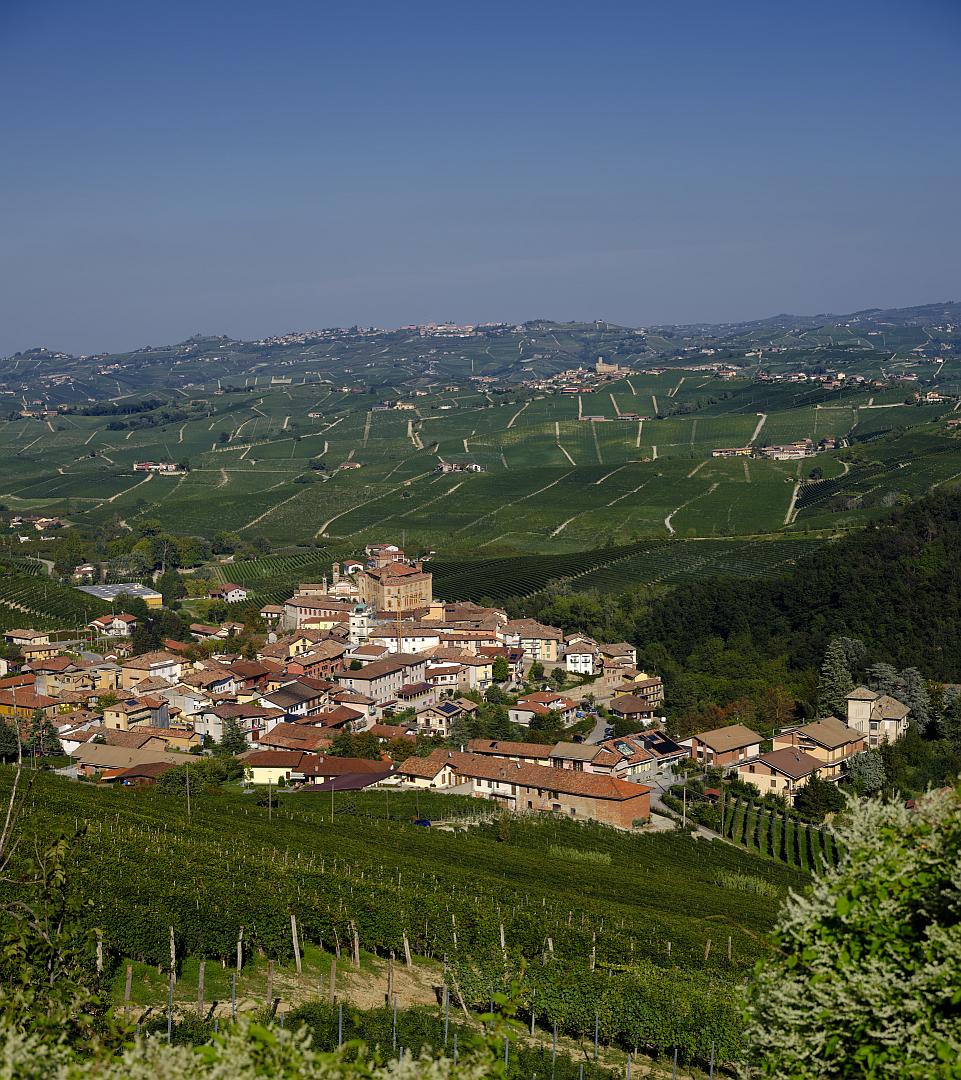
The castle was rebuilt in the 16th Century but these days it looks nothing like anything from either the 10th or the 16th centuries, despite there no doubt being remants of the original somewhere beneath. Instead the exterior looks distinctly Victorian, like something imagined by a Pre-Raphaelite painter. This is because it was heavily renovated from 1864 in the course of passing from private ownership to being the home of a charitable institution.
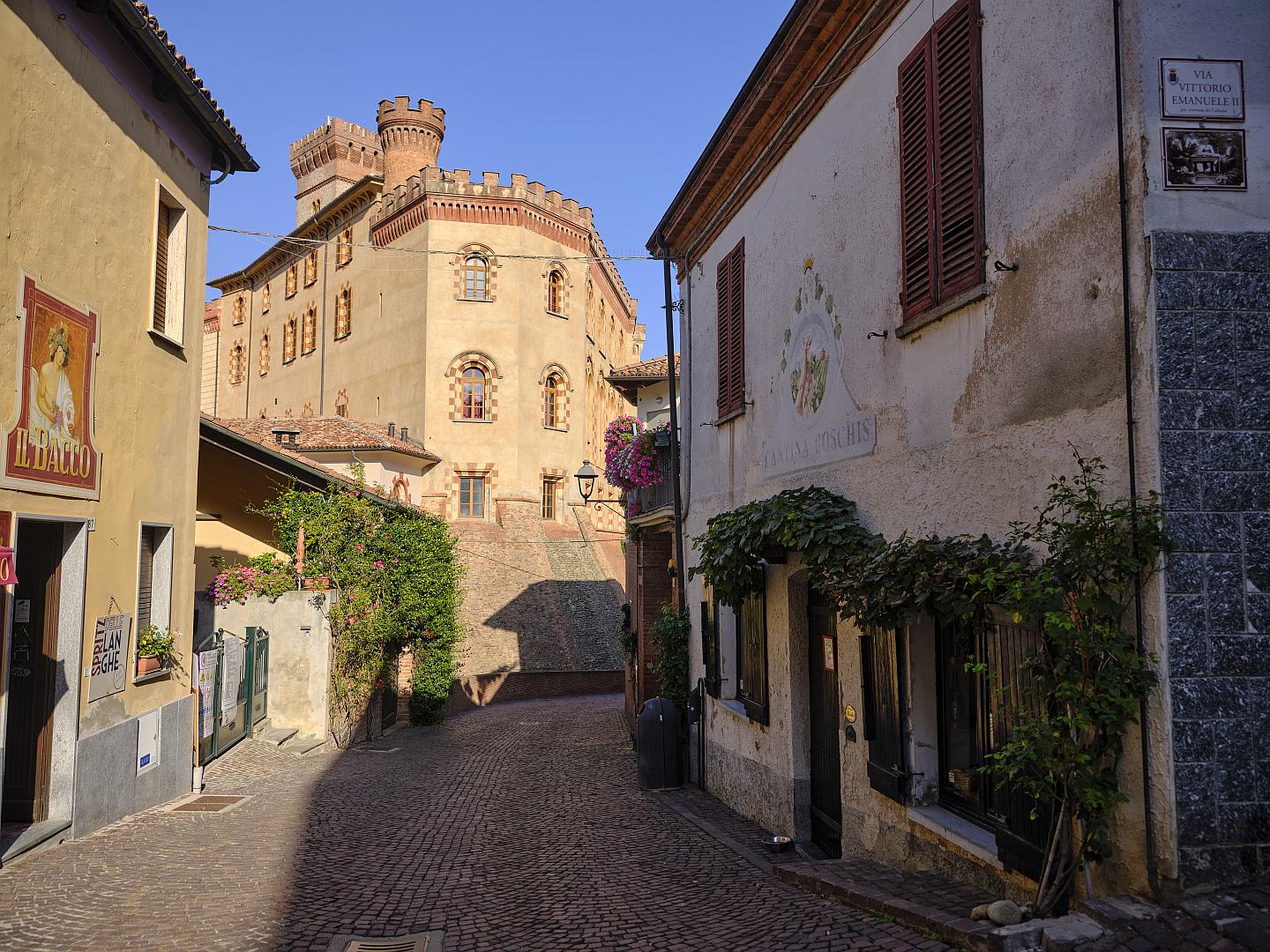
Even more so than La Morra, Barolo is now dedicated to wine and gastronomy. The winery of one of the major producers – Borgogno – is in the middle of town, and there are many enoteche, cantine and restaurants. Some enterprising, or optimistic, individual has even established a museum of corkscrews.
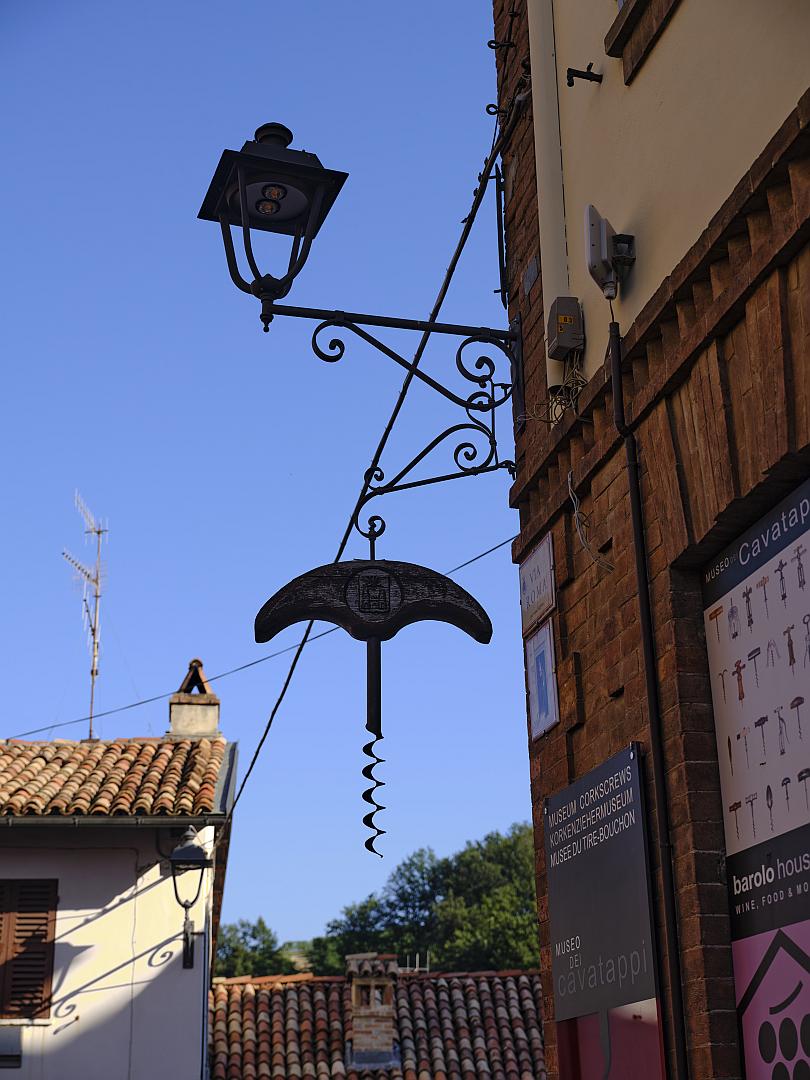
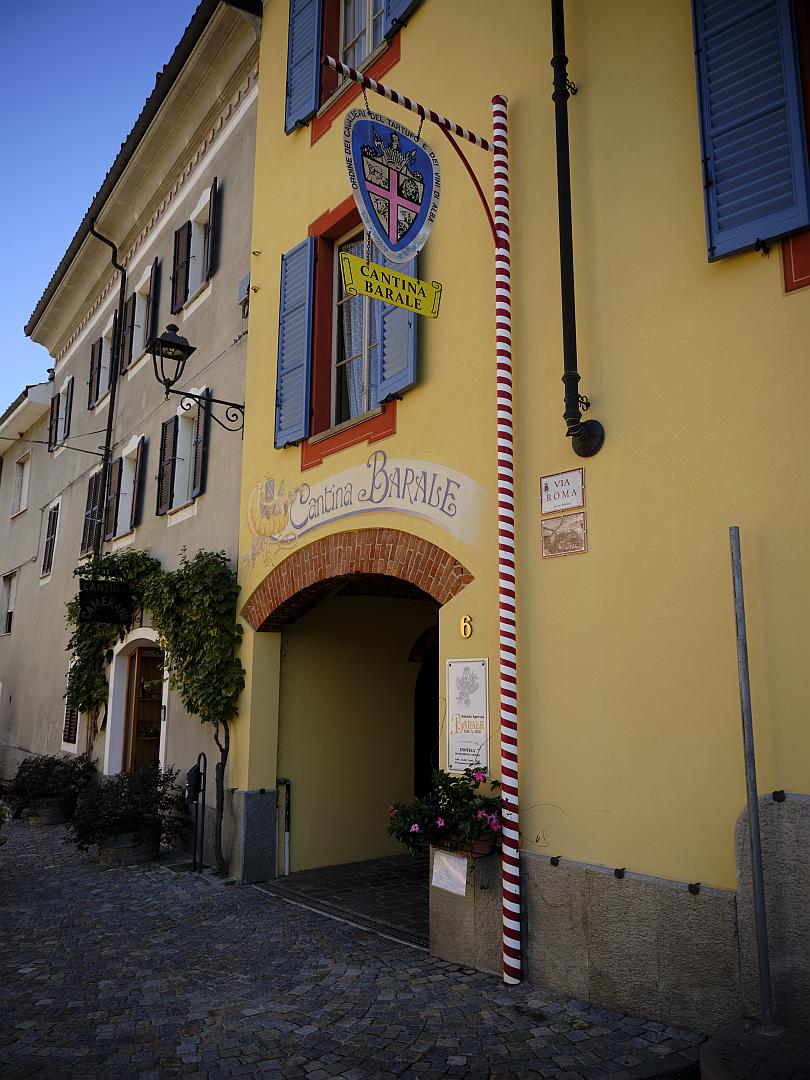
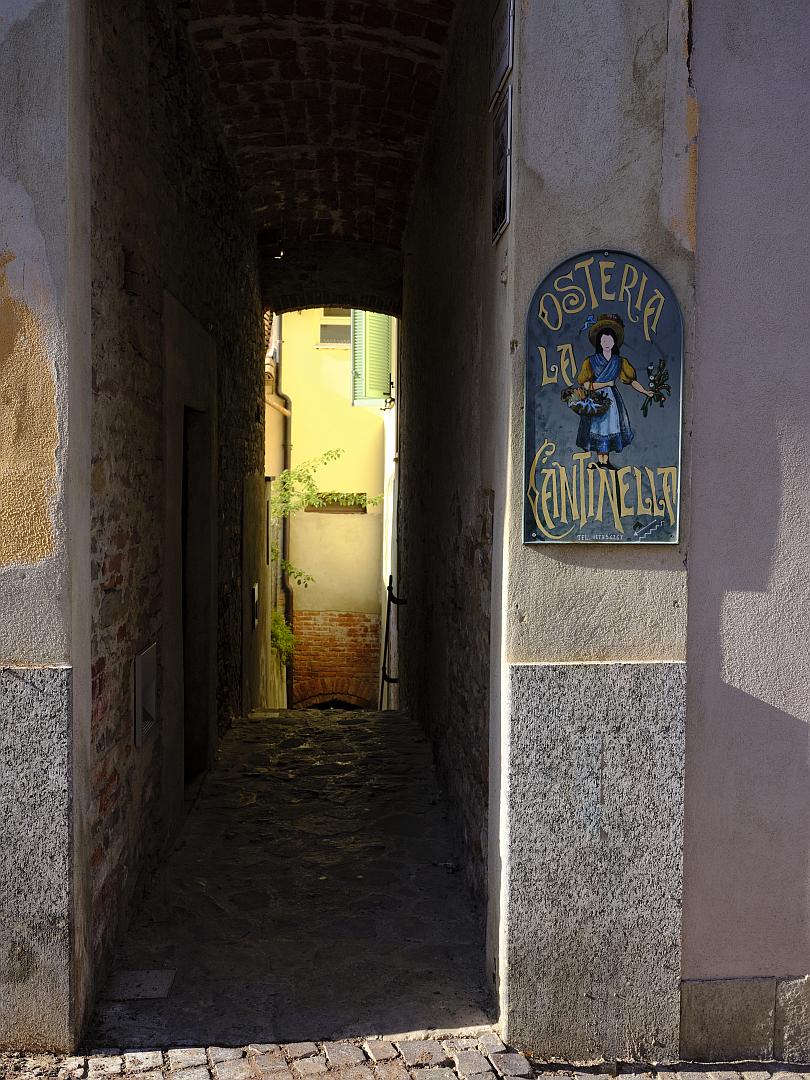
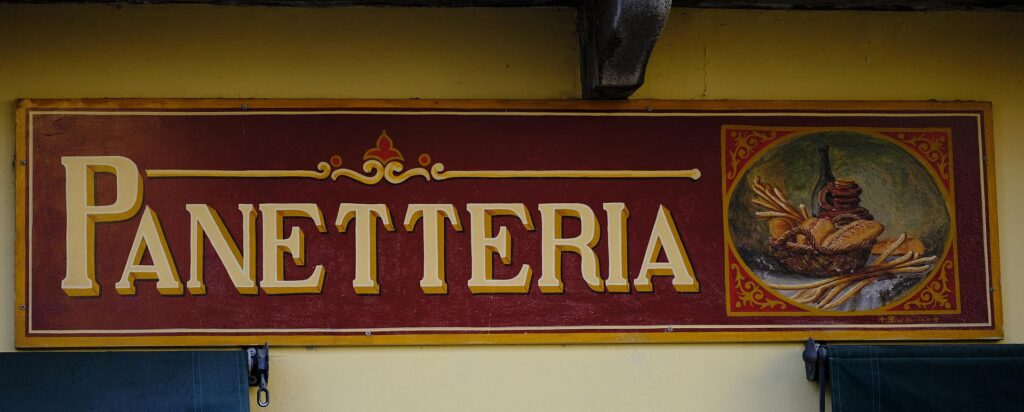
Like many such places in Italy, there are regular food festivals celebrating typical local dishes. Missing out on the tripe festival later in the month was a disappointment we could live with, though.
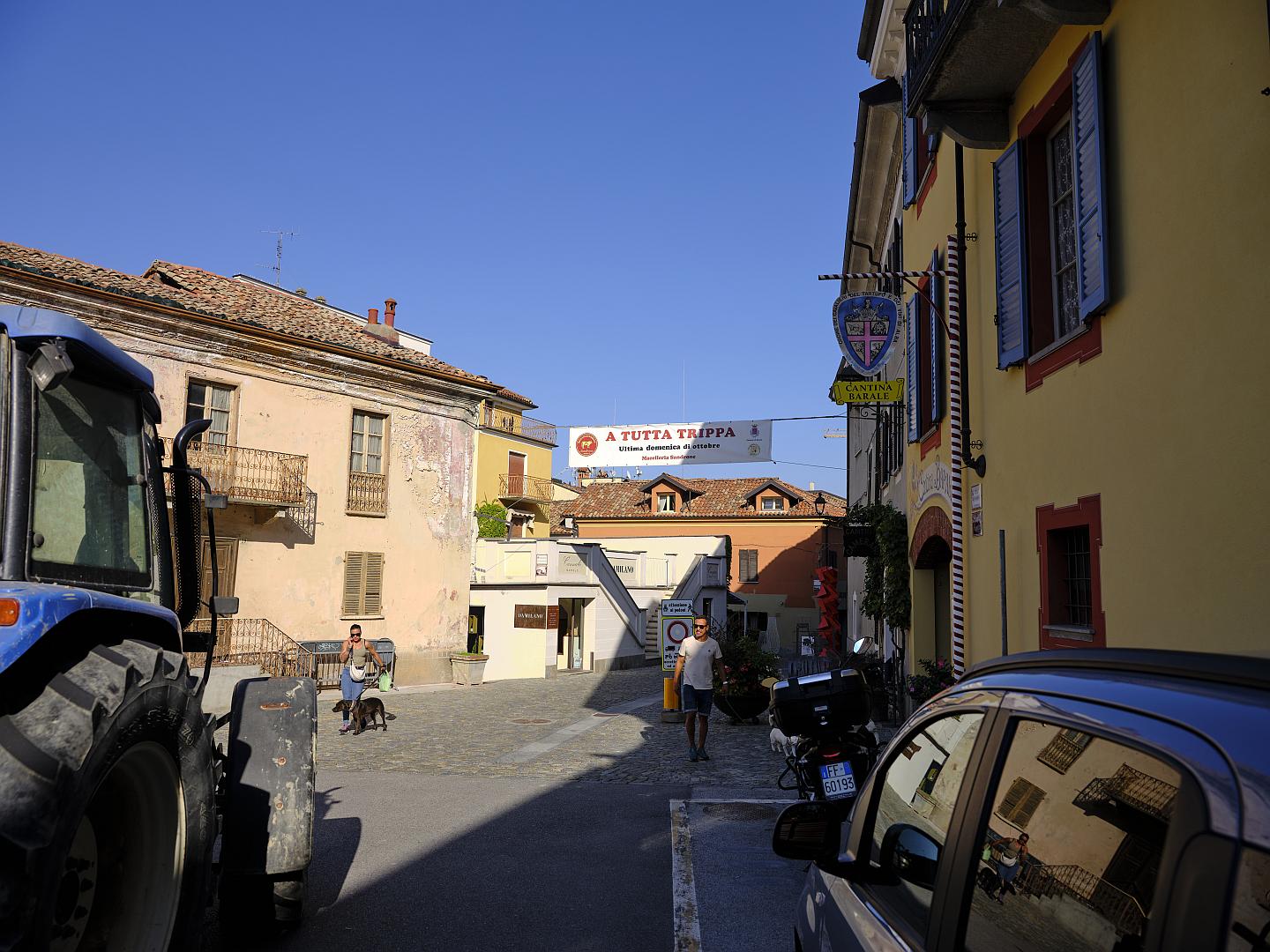

One Reply to “Wine and Truffles in the Langhe”